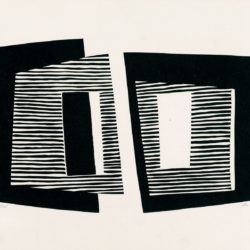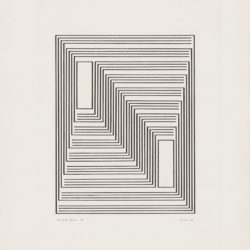
Albers first seriously took up printmaking in 1916, at the age of 28. After attending the Royal Art School, Berlin, from 1913 – 1915, he returned home to Bottrop to take up a teaching position. Simultaneously he resumed his studies at the School of Applied Arts in nearby Essen, where he began printmaking via bookplates and greetings cards. He focused on everyday subject matter to produce accomplished linocuts and lithographs depicting local landmarks, such as sand and coal-mines and animals. Using what was available to him during wartime, these graphic works were printed on a variety of papers and on sheets of different sizes. Albers first lithographs were based on dancers he had observed in a ballet entitled The Green Flute in 1916. His portraits from this period include studies of his own striking profile and those of his friends. The soft floating figures from The Green Flute series and his portraits reveal the playful and informal side of Albers’ character, as well as his developing fascination with the interplay of two and three-dimensional space.
Cristea Roberts Gallery
_





